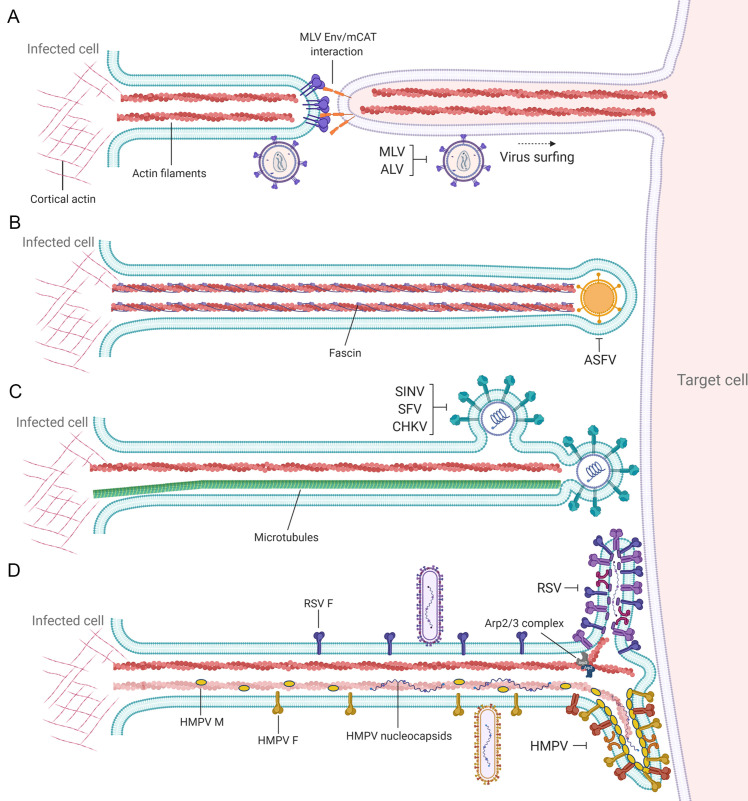Fig. 3.
Different strategies of cell-to-cell spread by filopodia. Filopodial bridges have been described as a mechanism for direct cell-to-cell transmission by different viruses. (A) Cells infected with some retroviruses including MLV and avian leukemia virus (ALV) can establish filopodial bridges with uninfected cells, with viral particles surfing along the surface of filopodia toward the cell body to initiate infection. Single as farvirus particles have been observed projected at the tip of filopodial structures (B), contrasting with alphaviruses (C), where multiple particles budding from filopodial extensions facilitate direct cell-to-cell spread. (D) Filamentous pneumovirus particles, including respiratory syncytial virus (RSV) and human metapneumovirus (HMPV), bud from filopodia reaching the surface of adjacent cells for direct cell-to-cell spread. Viral proteins and genome have been detected in filopodia induced by pneumoviruses.

